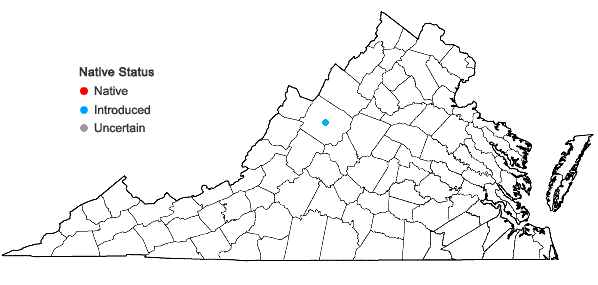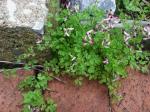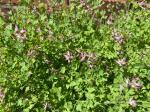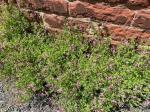Fumaria muralis W.D.J. Koch ssp. muralis

Detail
- Family
- Fumariaceae
- Botanical Name
- Fumaria muralis W.D.J. Koch ssp. muralis
- Common Name
- Common Ramping-fumitory, Wall Fumitory
- Synonym(s)
- Flora of Virginia Name/Status
- Not in Flora of Virginia.
- Comments
- This taxon was first observed by Fred Huber in downtown Staunton VA (Augusta County) on May 17, 2013. It was subsequently seen there on June 1, 2015, May 12, 2019, and May 13, 2021. Numbers of plants have varied over this period, but the location of plants has remained fairly constant. The surrounding area and nearby railroad bed have been searched, but no additional plants have been found. The initial identification was made by Fred Huber; vouchers deposited at VPI were subsequently sent to Dr. Magnus Liden (Uppsala University Botanic Gardens, Uppsala, Sweden), who confirmed the determination.
There is an iNaturalist project devoted to monitoring the rapid spread of Fumaria muralis in the United States:
https://www.inaturalist.org/projects/fumaria-muralis-in-the-usa
The species is native to western Europe and northwestern Africa but is widely naturalized as a weed beyond the native range. The first U.S. occurrence was reported from California in 2012. Since then, the number of reported observations has grown exponentially. It can now be found throughout California and locally in ten other states: Alabama, Florida, Georgia, Louisiana, Mississippi, Pennsylvania, South Carolina, Texas, Virginia, and Washington.
Fumaria muralis ssp. muralis can be distinguished from the more widespread F. officinalis by its larger flowers (9-12mm long vs. 6-9mm long) occurring in racemes of about 12 flowers (vs. 20-40+ in F. officinalis). In addition, the fruits of F. muralis are broadly ovate to globose, while those of F. officinalis are distinctly broader than long, with a truncate or emarginate apex. - Habitat
- Cracks along the brick and limestone bases of old buildings and in adjacent spaces between brick paving. Currently known only from the City of Staunton in Augusta County.
- Native Status
- Introduced
To save this map, right-click (control-click for Mac users) on the map and choose "Save Image As...".


